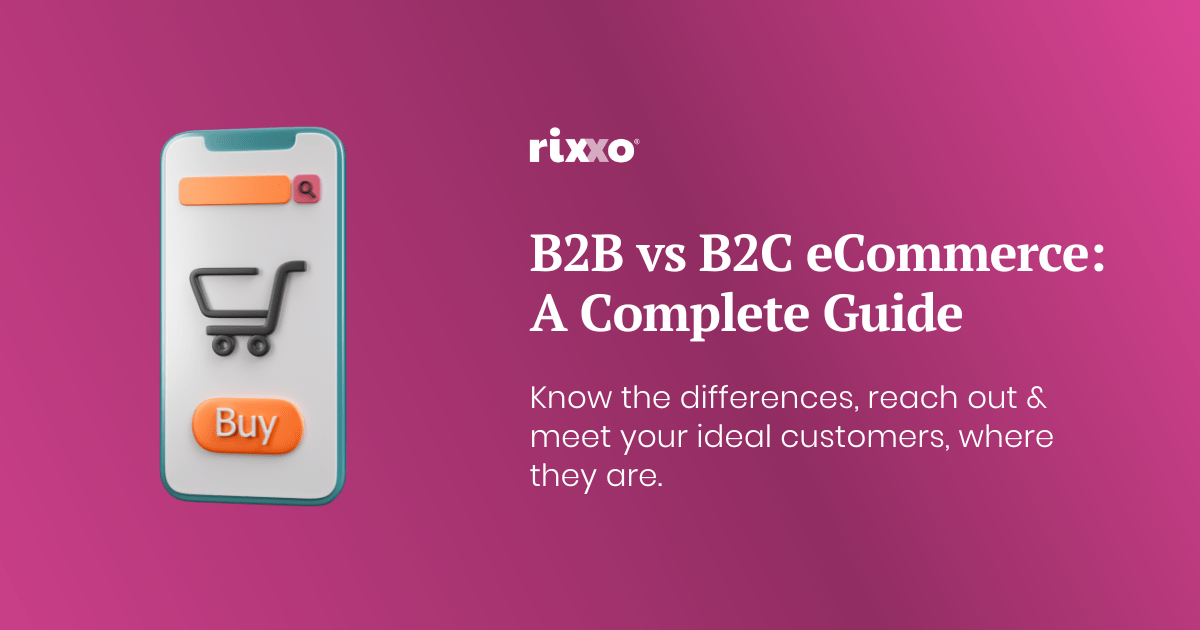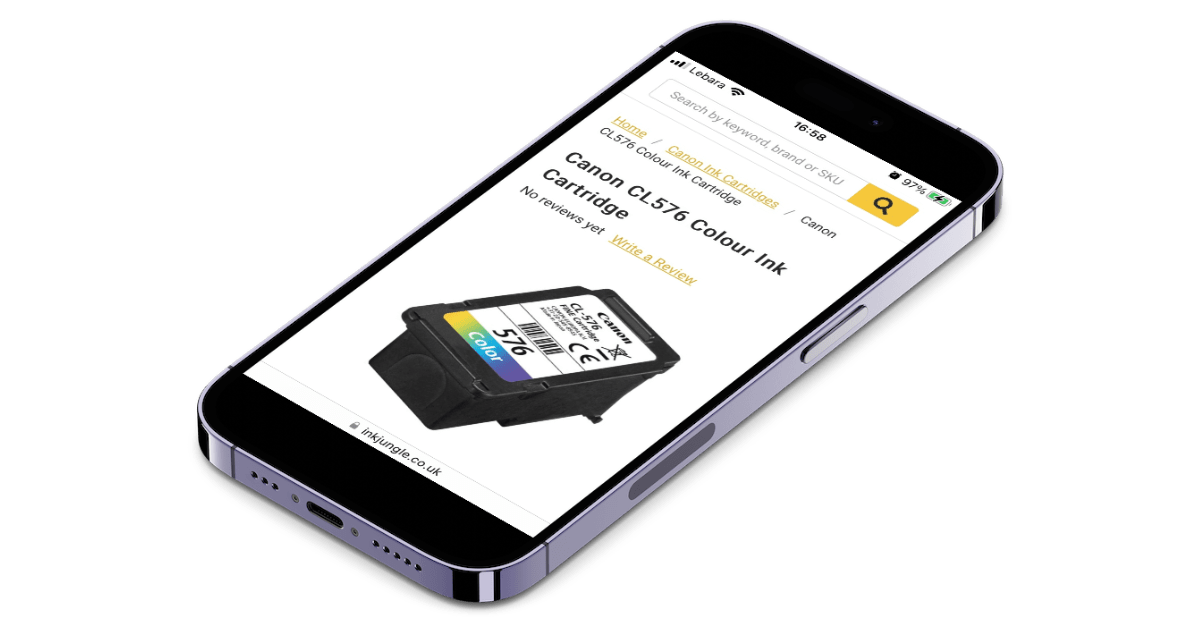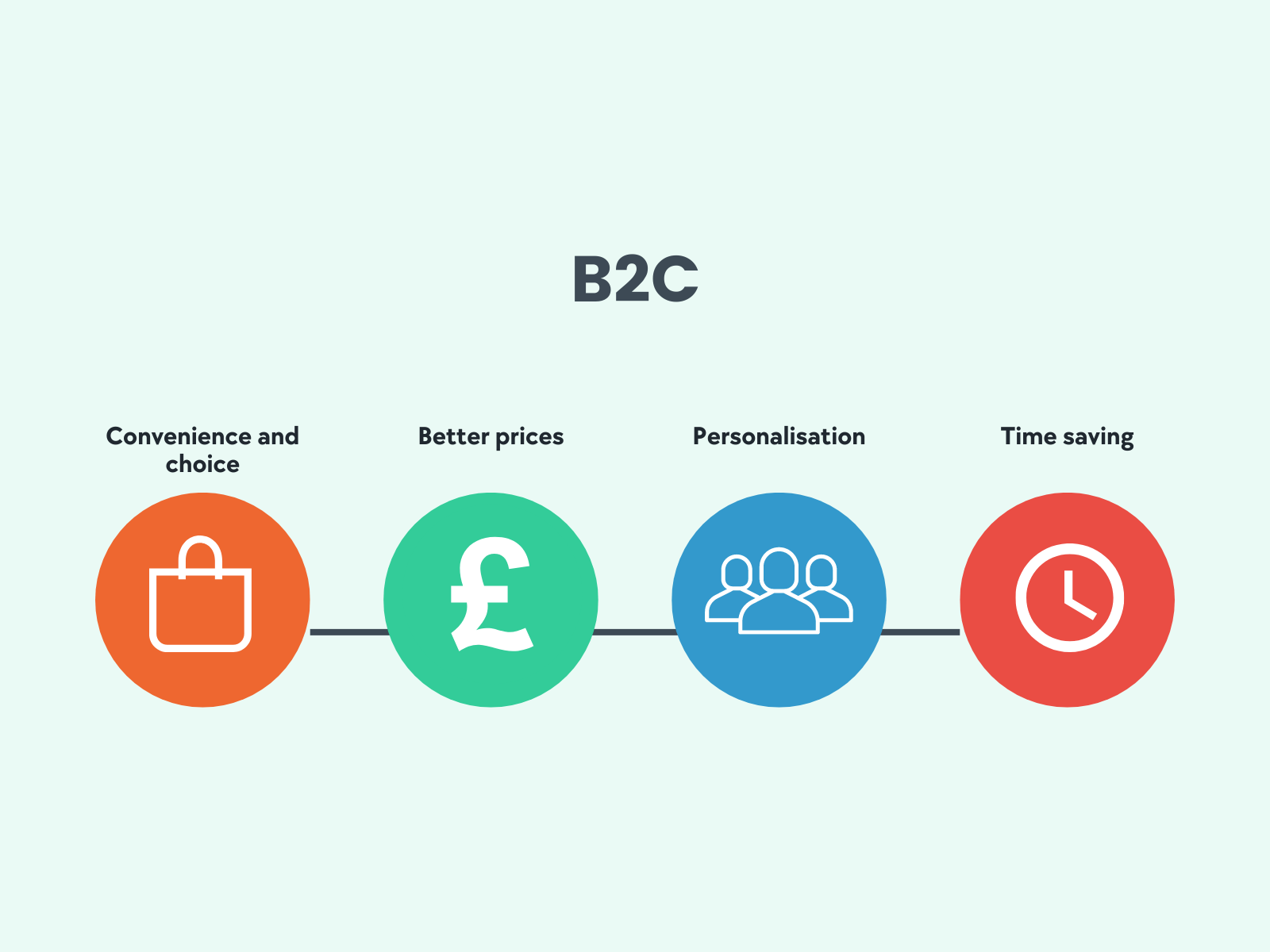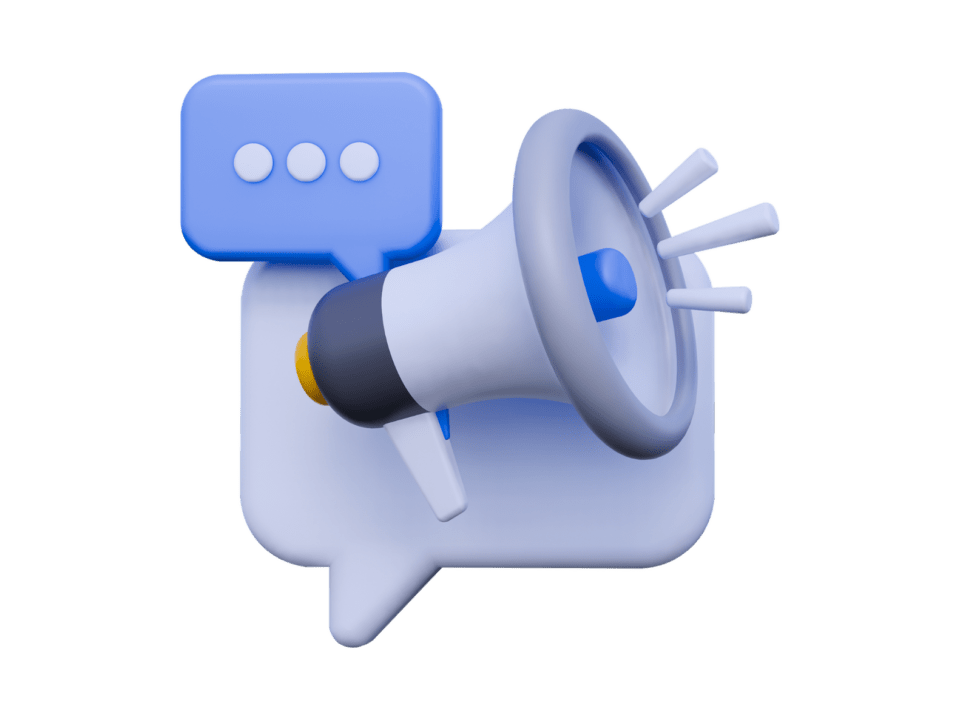Know Your Audience, B2B vs B2C eCommerce: A Complete Guide

In marketing terms, business-to-business (B2B) and business-to-consumer (B2C) is describing two distinct types of customer journey. Although they share many fundamentals, the methods of engagement differ in ways that are significant for all businesses that want to reach more of their ideal customers online.
What is B2B & B2C in eCommerce?
B2B
B2B, or Business-to-Business, refers to transactions between businesses. In the eCommerce space, this means a business is selling products or services directly to another business, rather than to individual consumers. This could be a manufacturer selling to a wholesaler, or a wholesaler selling to a retailer. B2B transactions often involve larger quantities and more complex sales processes, as the purchase decisions are usually based on long-term operational and strategic considerations.
B2C
In contrast, Business-to-Consumer (B2C) transactions involve businesses selling products or services to end consumers. Common examples include online shopping experiences such as purchasing a book from Amazon, ordering food through an app, or buying a digital course. These transactions, are usually straightforward and in smaller quantities, necessitating attention to individual preferences and a personalised user experience.
While the terms B2B and B2C are used to describe two differing business models, they also represent different approaches to commerce. Both have unique demands, different types of customers, varied decision-making processes, and contrasting sales strategies.
Understanding those differences can guide your business strategies, help you speak to the right audience, and ultimately make the difference between success and failure.
Same but different – what are the similarities between B2B and B2C?
Despite their distinctions, B2B and B2C eCommerce share a common digital marketplace and share similarities that are worth noting:
Digital presence
Both B2B and B2C businesses benefit from a strong online presence. Be it a visually appealing website, a functional app, or an active social media presence, creating digital touchpoints is crucial for engaging customers and fostering sales in both models.
The importance of user experience (UX)
Regardless of whether your customers are businesses or individuals, a smooth, intuitive, and user-friendly experience is a must-have. An easy-to-navigate interface, transparent pricing, and comprehensive product information are key UX factors that influence purchase decisions in both spheres.
Data-driven decision-making
Businesses across the board need to leverage data analytics for informed decision-making. Insights into customer behaviour, preferences, and purchasing patterns help shape marketing strategies, personalise offerings, and enhance customer engagement for both B2B and B2C businesses.
Mobile optimisation


Almost 50% of consumers use their smartphone to search for products and services online.
Source: https://www.uxmatters.com/mt/archives/2022/04/mobile-first-ecommerce-site-design-is-the-future.php
Whether it’s a B2B client checking emails on a lunch break or a B2C customer shopping from their sofa, easy access on their phone is a must.
B2B clients value the convenience of getting info on the go. B2C customers enjoy easy shopping from anywhere. Having a site or app that works well on a phone improves access for everyone. This can lead to fewer people leaving your site and more people buying your product.
In both cases, a mobile-friendly website or a user-centric app significantly enhances accessibility. It reduces bounce rates, improves time on site, and ultimately leads to higher conversion rates.
Security
Maintaining customer trust through stringent security measures is paramount in an era of increasing cyber threats, regardless of the audience. Encryption, secure payment gateways, and data privacy measures are essential in both B2B and B2C eCommerce.
In many respects, a B2B and B2C eCommerce site share the same fundamentals for success – a great user experience, secure payment gateways, intuitive navigation, and, above all, an unrelenting focus on understanding and satisfying customer needs. With the similarities noted, let’s dig into how the business models diverge.
B2C vs B2B marketing
B2C eCommerce marketing draws in consumers with engaging content and fast solutions. B2C audiences look for deals and entertainment, often making purchases based on personal gratification.
A B2B eCommerce marketing strategy is a longer game. The B2B consumer is interested in building relationships and demonstrating ROI. B2B buyers prioritise efficiency and expertise, driven by logic and financial gain, seeking clear ROI.
So what do these differences look like as part of a marketing strategy? Let’s go step by step and find out how you can set your business marketing strategy on the right path.
Buyer personas: B2B
In B2B marketing, the buyer persona is often a professional tasked with making informed decisions that directly impact the organisation’s success. This persona is driven by a pursuit of efficiency and expertise, underpinned by a strong emphasis on return on investment (ROI).
These individuals are long-term thinkers, planning for their organisation’s future. They value data and facts and will often undertake substantial research before making a purchasing decision. Due to the higher stakes and longer sales cycles involved in B2B transactions, they tend to be meticulous fact-checkers, wanting to ensure they are making the most informed decision possible.
They appreciate vendors who invest time in understanding their specific challenges and needs, and who can demonstrate a commitment to assisting them in achieving their long-term objectives.
Buyer personas: B2C
In B2C, you have a broader range of audience demographics. The B2C buyer persona can vary widely – from young adults shopping for the latest fashion trends to retirees looking for a new gardening tool. They could be tech-savvy individuals seeking the latest gadget, parents looking for healthy meal options for their family, or a fitness enthusiast searching for the next great piece of home exercise equipment.
This diverse audience typically prioritises personal benefits in their purchasing decisions. They are looking for products or services that satisfy their specific needs, improve their quality of life, or offer them a sense of joy or satisfaction. Convenience is another factor for B2C customers, who value quick, easy, and seamless shopping experiences.


Furthermore, B2C customers are often driven by emotional satisfaction. They might be seeking a product that makes them feel confident, a service that provides comfort, or an experience that brings them happiness. Emotional storytelling, aspirational messaging, and strong brand personalities can significantly influence their purchasing decisions.
Given the variety and complexity of the B2C audience, understanding the specific characteristics of your customer personas is key. These personas influence everything from the tone and style of your messaging, the type of content you produce, to the channels you select for your marketing communication. By tailoring your strategies to meet the needs, preferences, and motivations of your unique buyer personas, you can create more compelling, targeted, and effective marketing campaigns.
Check out this free guide to creating a detailed buyer persona by HubSpot
Content strategies and the sales cycle
The sales cycles in B2B transactions are typically more intricate and prolonged than their B2C counterparts. This is primarily due to the nature of B2B transactions, which often have higher order values and involve long-term contracts. These purchases are substantial investments for businesses, necessitating careful consideration, planning, and approval from multiple decision-makers within an organisation.
These stakeholders could include procurement managers, department heads, executives, and occasionally, board members. Each stakeholder has a different set of priorities and considerations, all of which need to be addressed during the sales process. This multifaceted decision-making process significantly extends the duration of the B2B sales cycle.
B2C transactions are quicker and more impulsive, driven by catchy campaigns that stimulate instant desire or need.
This means that marketing efforts in the B2B arena need to be persistent, patient, and strategic. It’s less about quick wins and more about building and nurturing relationships over time. B2B marketers often employ tactics like email marketing, content marketing, and LinkedIn networking to engage with prospects at various stages of the sales cycle.
B2B marketing leverages detailed, informative content where the aim is to build trust and display authority to decision-makers. This is where detailed content like case studies, whitepapers, and webinars can play a role, helping to inform and persuade these decision-makers over the extended sales cycle.
B2C, however, often centres around storytelling, entertainment, and personal connection. Content forms like social media posts, blogs, and videos are employed to resonate emotionally with the consumers.


While both B2B and B2C use digital channels to get their messaging out, their preferences may vary. B2B marketers may often focus on LinkedIn for networking and lead generation, while email marketing can facilitate personalised, direct communication.
B2C marketing frequently leverages platforms like Instagram, Facebook, or TikTok, aiming for wider reach and consumer engagement.
While the strategies differ, the core principle remains the same: understanding your customers’ needs and providing value. Whether it’s a business or an individual consumer, effective marketing speaks to their interests, solves their problems, and enriches their experience. By understanding these key differences, you can tailor your marketing approach to resonate powerfully with your intended audience.
Pricing strategies and payments in B2B vs B2C eCommerce
B2B transactions are characterised by their inherent complexities compared to standard consumer purchases. Negotiation is a common practice due to larger purchase volumes, often leading to bulk discounts. To cater to the specific needs of businesses, sellers frequently offer customised pricing, which is typically only visible to logged-in, authorised users. This approach not only ensures price confidentiality but also fortifies the trust and relationship between the buyer and seller, underscoring the strategic nature of B2B engagements.
This contrasts with B2C pricing, which is generally fixed and leverages promotional tactics like sales, discounts, or bundling to stimulate purchases.
While B2B customers often negotiate prices, leveraging large orders as a bargaining chip, B2C customers typically pay the listed price, with less room for negotiation except during promotions.
Payment Options
Differences in payment options between B2B and B2C eCommerce arise from their distinct demands and operations. B2C consumers favour quick, convenient methods of payment such as digital wallets, credit cards, and debit cards. This ease and speed align well with the impulse-driven, instantaneous nature of many B2C purchases.
On the other hand, B2B buyers lean towards alternative payment methods that cater to their specific business needs and offer them more financial flexibility. This includes options like bank transfers, credit accounts, purchase orders and the increasingly popular ‘buy now, pay later’ models. These methods allow businesses to manage their cash flow better, especially when dealing with high-value orders and longer payment cycles.
In some cases, businesses may even opt for delayed payment options, allowing them to sell the inventory before the payment is due. This nuanced approach to payment in B2B transactions reflects the complexity and scale of business operations and the importance of financial management.
Retention and Repeat Orders
Customer retention and repeat orders are success factors for both B2B and B2C eCommerce. However, the mechanics and strategies employed in each model vary due to their unique transactional natures.
In B2B, default retention exists primarily because businesses require a steady supply of inventory for their operations or for resale. Here, the emphasis lies not just on the initial sale but also on nurturing a strong, long-term relationship with the client. High-quality customer service, regular follow-ups, personalised offers, and demonstrating consistent value to the client are important for the B2B customer retention strategy. Success in this area ensures a steady stream of repeat orders, creating a reliable revenue source for the business.
On the other side, B2C typically handles transactions of smaller cart values. While repeat customers are beneficial, the business model often leans more towards customer acquisition. In this model, marketing strategies frequently focus on stimulating impulse buys, attracting new customers, and creating brand awareness. That being said, strategies to improve customer retention, like loyalty programs and personalised marketing, are still valuable in the B2C sphere to encourage repeat purchases.
Final thoughts
From our exploration, it is clear that B2B and B2C eCommerce have distinct characteristics, each demanding a tailored marketing approach to effectively engage their respective audiences. While similarities exist, especially in the fundamental need for quality, ease of use, and convenience, the differences between the two models carry significant implications for your business strategy.
In B2B marketing, the emphasis lies on building long-term relationships, leveraging informative and expert content, and demonstrating clear ROI. A well-designed B2B eCommerce site should be capable of handling the longer sales cycle due to higher order values and multiple decision-makers. The pricing strategies should allow for negotiation and bulk discounts, with preferred payment methods including bank transfers and deferred payment models. Retention and repeat orders form the lifeblood of B2B eCommerce, necessitating an ongoing emphasis on excellent customer service and relationship management.
On the other hand, B2C eCommerce marketing targets a broader demographic spectrum, prioritising personal benefits, convenience, and emotional satisfaction. The sales cycle is typically quicker and more impulsive, driven by compelling campaigns. Pricing is generally fixed with promotional tactics employed to stimulate purchases, while payment options tend to favour speed and convenience, such as digital wallets and credit cards. Although retention and repeat orders are valued, the B2C model often places a stronger emphasis on customer acquisition.
Understanding these differences and similarities is key to helping you shape an effective strategy tailored to your target market, whether it’s B2B or B2C. By thoughtfully considering your audience, their needs, and their buying behaviour, you can optimise your approach for maximum impact in your respective eCommerce arena.


Need help connecting with your customers?
As a B2B eCommerce agency, we enjoy nothing more than helping businesses like yours thrive in digital. Get in touch to see how we can help you connect with your customers.
